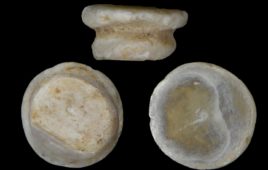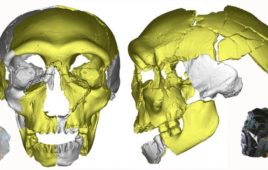 MOSCOW (AP)—A perfectly preserved woolly mammoth carcass with liquid blood has been found on a remote Arctic island, fueling hopes of cloning the Ice Age animal, Russian scientists said Thursday.
MOSCOW (AP)—A perfectly preserved woolly mammoth carcass with liquid blood has been found on a remote Arctic island, fueling hopes of cloning the Ice Age animal, Russian scientists said Thursday.
The carcass was in such good shape because its lower part was stuck in pure ice, said Semyon Grigoryev, the head of the Mammoth Museum, who led the expedition into the Lyakhovsky Islands off the Siberian coast.
“The blood is very dark, it was found in ice cavities below the belly and when we broke these cavities with a poll pick, the blood came running out,” he said in a statement released by the North-Eastern Federal University in Yakutsk, which sent the team.
Wooly mammoths are thought to have died out around 10,000 years ago, although scientists think small groups of them lived longer in Alaska and on islands off Siberia.
Scientists have deciphered much of the woolly mammoth’s genetic code from their hair, and some believe it’s possible to clone them if living cells are found
Grigoryev said the find could provide the necessary material. The blood of mammoths appeared not to freeze in extreme temperatures, likely keeping mammoths warm, he said.
The temperature at the time of excavation was -7 to -10 C (14 to 19 F).
The researchers collected the samples of the animal’s blood in tubes with a special preservative agent. They were sent to Yakutsk for bacterial examination in order to spot potentially dangerous infections.
The carcass’ muscle tissue was also in perfect condition.
“The fragments of muscle tissues, which we’ve found out of the body, have a natural red color of fresh meat,” Grigoryev said.
Up to 4 meters (13 feet) in height and 10 tons in weight, mammoths roamed across huge areas between Great Britain and North America and were driven to extinction by humans and the changing climate.
Source: The Associated Press




